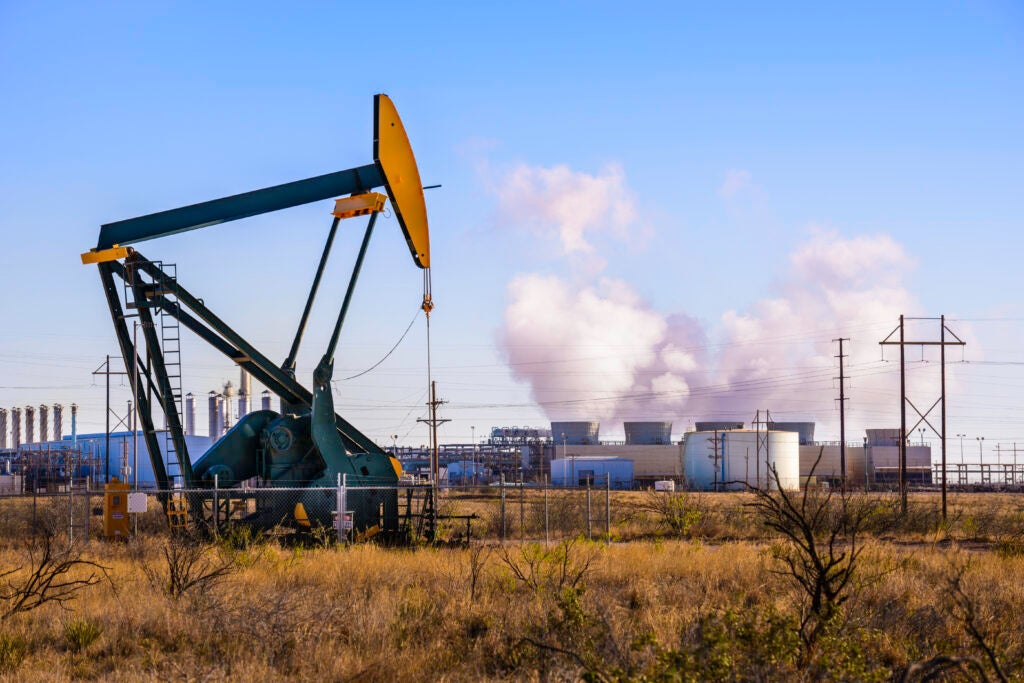Coming off yet another summer of record-breaking heat, it’s clear that climate action can’t wait. The world is hunting for solutions that can deliver on speed and scale, so there is more and more international attention on reducing oil and gas methane emissions as a crucial part of our climate approach.
The International Energy Agency just released a new report confirming that in order to prevent the worst impacts of climate change we must rapidly cut oil and gas methane emissions alongside reducing demand. Oil and gas methane is set to be a hot issue at COP 28, and the Environmental Protection Agency will soon finalize new regulations for reducing industry emissions.
In order to solve our methane problem, we need to accurately understand the scale of it. Luckily, the Inflation Reduction Act is going to help us do both. A program called the Methane Emissions Reduction Program has the US primed to be a worldwide leader on this urgent issue.
How the Inflation Reduction Act will help drive major methane emissions reductions Click To TweetThe program has three main components that will help us cut methane from oil and gas production:
- New funding for methane emissions reductions
- An update to emissions reporting requirements
- A new waste charge for especially excessive methane emissions.
Federal funding is cutting methane and creating jobs
Congress allocated $1.5 billion to fund the Methane Emissions Reduction Program. The EPA and the Department of Energy recently announced that $350 million of that funding will go to plug marginal conventional wells, a climate-friendly action that also creates jobs in the oilfield. The rest of the funding will be rolled out over time to further reduce emissions and support oil and gas communities.
This funding can make a huge difference in the lives of people who live nearby oil and gas operations – the frontline communities that have been bearing the health costs of the industry’s pollution. Bold investments in these communities will improve health outcomes and help revitalize rural economies.
Updating our outdated methane reporting policies
The program also requires the EPA to update its greenhouse gas reporting requirements. This is crucial. For over a decade the EPA has required companies to report their climate pollution (Subpart W of the Greenhouse Gas Reporting Program), but those requirements rely on methods that are now severely outdated and don’t accurately reflect the true scale of pollution. Multiple scientific studies based on actual methane measurements taken at oil and gas sites find emissions are much higher than what gets reported.
Thanks to the IRA, the EPA is in the process of updating those reporting standards. New requirements that reflect our modern understanding of emissions will help provide a clearer picture of the true state of methane and ultimately help us better manage that pollution. Ensuring that the biggest pollution events, called super-emitters, are reported to EPA is especially important, so that we know where improvements need to be made.
(EDF recommendations for what those new reporting standards should include are here.)
A charge on excessive waste: high fees for high polluters
The waste charge or fee on excessive methane emissions is exactly what it sounds like: operators that exceed an industry-aligned intensity threshold of methane emissions will pay a fee that increases over time. This will be an essential tool to hold polluters accountable and will lead to efficiency improvements as operators are incentivized to track their waste more carefully.
The fee targets the biggest methane emitters – operators that emit more than 25,000 tons of climate pollution. Smaller operators and operators who are in compliance with the EPA’s final methane standards will be exempt. The updates to the EPA reporting requirements will be crucial for making the waste fee effective.
The IRA is a landmark piece of climate legislation, and its forward-thinking approach to methane emissions may prove to be one of its most important legacies. Cutting methane is one of the most important climate solutions we have, and thanks to Congress the United States is in a perfect position to be a global leader on protecting communities from this harmful source of pollution.
